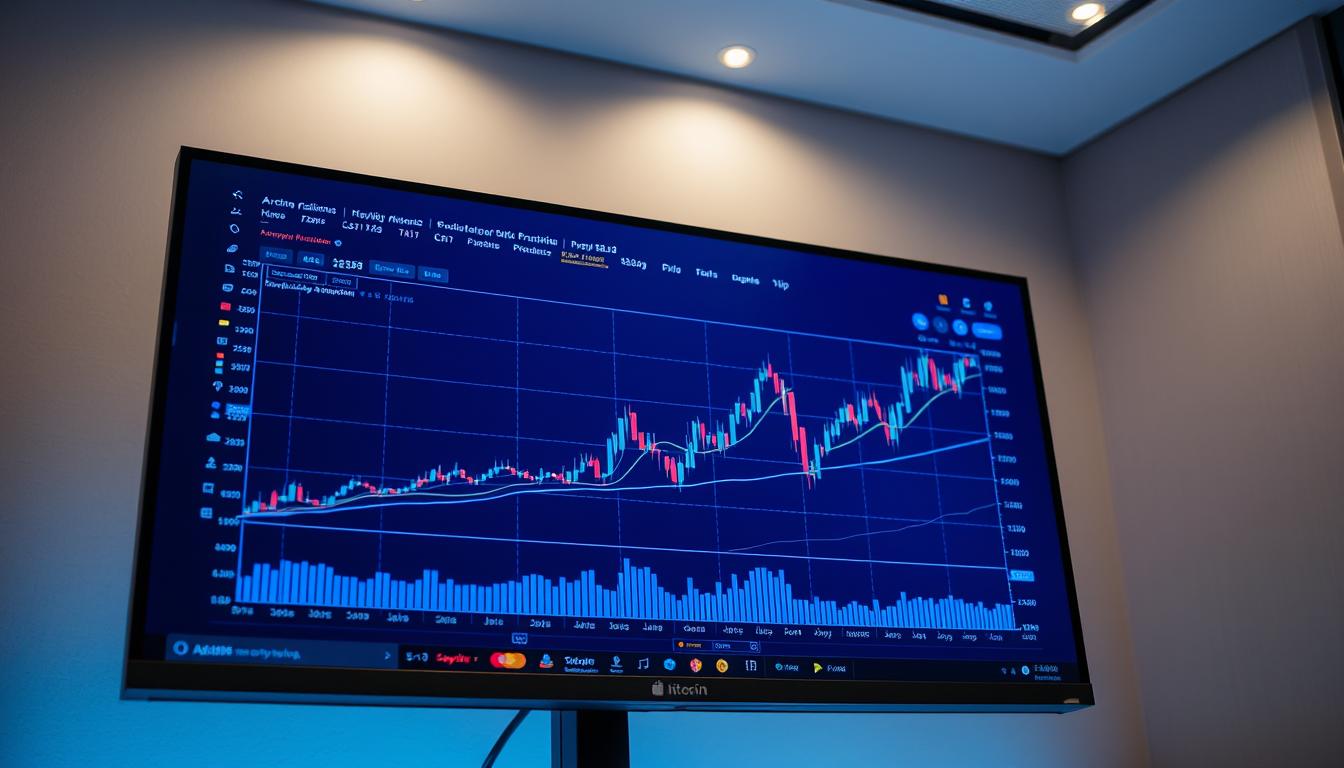Now Reading: Guide on How to Analyze Cryptocurrency Market Trends
- 01
Guide on How to Analyze Cryptocurrency Market Trends
Guide on How to Analyze Cryptocurrency Market Trends

Navigating the digital asset landscape requires a solid strategy. This guide introduces essential methods for evaluating the cryptocurrency market. Both newcomers and experienced investors can benefit from these insights.
Making informed decisions in this volatile space is crucial. Understanding different types of analysis helps identify potential opportunities. It also allows you to spot major trends before they become mainstream.
We will explore three primary evaluation methods. These techniques are used by successful traders to assess the crypto market. You will learn about key metrics and practical tools.
This information comes from industry experts and real-world examples. Combining multiple approaches provides a comprehensive view. A disciplined analysis strategy is your best tool for success.
Key Takeaways
- Evaluating digital assets requires a clear and structured approach.
- Different methods of assessment provide unique insights into value and risk.
- Combining techniques creates a more complete picture of investment opportunities.
- Key metrics and indicators help distinguish strong projects from weak ones.
- A disciplined strategy is essential for navigating market volatility.
- Practical tools and expert strategies can significantly improve decision-making.
- Recognizing patterns early can lead to more informed and timely investments.
Introduction to Cryptocurrency Markets
Cryptographic currencies emerged as a disruptive force challenging traditional monetary systems. A cryptocurrency represents digital money secured by cryptography and recorded on distributed ledger technology. This innovative asset class operates without central authority control.
Bitcoin launched in 2009 as the pioneering digital currency. Since that time, over 13 million alternative cryptocurrencies have appeared. Each offers unique technological features and specific applications.
The digital currency market operates continuously worldwide. Understanding blockchain fundamentals is crucial for any investment in this space. This knowledge helps assess each crypto asset properly before committing funds.
Despite advanced security measures, blockchain systems can have vulnerabilities. Thorough research remains essential for navigating this evolving landscape successfully.
How to Analyze Cryptocurrency Market Trends
Successful navigation of the volatile digital currency space demands proficiency in several complementary analytical frameworks. Three primary ways dominate this analysis: fundamental, technical, and on-chain evaluation. Each approach offers unique perspectives on the crypto landscape.

Major financial institutions have embraced these methodologies. Goldman Sachs, JP Morgan, and Morgan Stanley publish investment reports using fundamental analysis. This demonstrates mainstream acceptance of structured evaluation tools.
Tushar Jain of Multicoin Capital observes that “The crypto markets are the least efficient markets I’ve ever seen in my life.” This inefficiency creates significant opportunities for informed investors. Thorough research becomes the key differentiator.
Evaluating cryptocurrency projects requires comprehensive information gathering. Investors examine white papers, development teams, and community engagement. Combining all three ways of analysis provides the most complete picture.
This multi-faceted approach helps distinguish legitimate projects from overhyped tokens. Proper research separates successful long-term investors from speculative traders. The market rewards those who apply rigorous analysis techniques.
Key Metrics and Indicators in Crypto Analysis
Key quantitative indicators serve as fundamental building blocks for investment decisions. These measurements provide objective data about project strength and market position.

Understanding these metrics helps investors make informed choices. They reveal important aspects of each digital asset’s potential.
Market Capitalization and Trading Volume
Market cap represents the total value of all circulating coins. Projects exceeding $1 billion in market capitalization often show established presence.
High volume indicates strong liquidity and trading activity. This data point helps assess market interest and stability.
According to industry resources, combining these metrics provides comprehensive insights. They work together to paint a complete picture.
Supply Dynamics and Price Movements
Supply factors significantly influence price behavior. Three key measurements help understand scarcity dynamics.
| Supply Metric | Definition | Impact on Value |
|---|---|---|
| Circulating Supply | Tokens currently available for trading | Immediate market availability |
| Total Supply | All tokens created to date | Current creation status |
| Maximum Supply | Absolute cap on token creation | Long-term scarcity potential |
Bitcoin demonstrates effective scarcity management. Its fixed maximum supply of 21 million coins creates natural value appreciation pressure.
The emission rate affects short-term price movements. Understanding these dynamics helps predict future price trends.
Technical Analysis for Crypto Trading
Technical analysis provides a powerful framework for understanding price movements in digital asset trading. This method studies historical data and statistical patterns to forecast future direction. Many trading professionals rely on these tools for decision-making.
Visual charts form the foundation of this approach. They reveal critical signals like support and resistance levels. Recognizing these patterns helps identify potential entry and exit points.
Chart Patterns, MACD, and RSI Insights
The Moving Average Convergence Divergence (MACD) tracks momentum shifts between two averages. It signals potential changes in the trend. The Relative Strength Index (RSI) measures overbought or oversold conditions.
Readings above 70 suggest overbought assets, while below 30 indicates oversold conditions. These indicators help gauge market sentiment. They provide valuable insights into probable price corrections.
Risk Management and Setting Auto Sells
Even successful technical analysis practitioners maintain realistic expectations. Achieving 55% accuracy can yield substantial profits when combined with proper risk controls. Discipline separates consistent traders from speculative gamblers.
Automatic sell orders protect against unexpected price movements. Position sizing limits exposure to any single trade. These practices create a safety net for your portfolio.
Fundamental Analysis: Evaluating Crypto Projects
Beyond price charts, fundamental evaluation digs deep into the core components that drive long-term success. This approach examines all available research to determine intrinsic value. Investors compare this assessment against current pricing to identify opportunities.

Hillary Adler of BitcoinOS emphasizes, “Hype dies fast—fundamentals last. Surviving a bear market is that simple.” This philosophy underscores why thorough investigation matters more than short-term excitement.
Assessing White Papers and Development Teams
A project’s white paper serves as its foundational document. Quality documentation clearly explains technical protocols rather than marketing hype. Chainlink exemplifies this with detailed explanations of its decentralized oracle networks.
The development team credibility is equally critical. Legitimate projects showcase members with verifiable blockchain experience. Polygon demonstrates transparency through detailed professional profiles.
Reviewing Tokenomics, Roadmaps, and Community Engagement
Tokenomics analysis examines supply dynamics and utility functions. This determines long-term sustainability of the token‘s value proposition. Distribution methods like staking and airdrops impact demand.
Community quality distinguishes legitimate projects. Authentic discussions focus on technical progress rather than price speculation. Active social media channels with genuine dialogue indicate strong project health.
| Fundamental Metric | Purpose | Impact Assessment |
|---|---|---|
| White Paper Quality | Technical foundation review | Project legitimacy indicator |
| Team Experience | Development capability | Long-term viability predictor |
| Tokenomics Structure | Supply and demand analysis | Value sustainability measure |
| Community Engagement | Adoption and support level | Network growth potential |
Combining these elements provides a comprehensive view for evaluating cryptocurrency projects. Each factor contributes to understanding true project potential beyond market fluctuations.
On-Chain Analysis: Leveraging Blockchain Data
The immutable nature of distributed ledgers creates a treasure trove of actionable insights for strategic positioning. This analysis method examines public blockchain data to understand participant behavior.

Unlike traditional financial markets with opaque transactions, blockchain technology provides complete transparency. Every movement becomes permanently recorded for detailed examination.
Monitoring Wallet Activity and Transaction Volumes
Wallet monitoring reveals accumulation or distribution patterns among different participant groups. Large wallet movements often signal institutional investors entering or exiting positions.
Transaction volume indicates real economic activity within the network. Increasing volumes suggest growing adoption and utility. Declining activity may signal waning interest.
Glassnode data shows bitcoin ownership becoming more decentralized over history. Miners and large holders now control smaller percentages. Everyday investors hold substantially more coins.
Understanding Network Health and Miner Behavior
Network health metrics like hash rate measure computational power securing the blockchain. Higher hash rates indicate stronger security and miner confidence.
Miner revenue data reveals the economic sustainability of proof-of-work networks. This information helps assess long-term viability.
Advanced indicators like MVRV and NVT ratios help determine whether current prices reflect fair value. These tools provide deeper analysis beyond simple price charts.
Integrating Analysis Methods for Informed Trading
Mastering digital asset evaluation requires integrating multiple analytical perspectives. Combining technical, fundamental, and on-chain approaches creates a comprehensive view more powerful than any single method.
Combining Technical, Fundamental, and On-Chain Insights
Each evaluation technique provides unique advantages. Technical charts reveal price patterns, while fundamental research assesses project viability. On-chain data shows real network activity.
Successful trading doesn’t require perfect alignment across all methods. Maintaining disciplined risk management allows flexibility for high-probability opportunities. Position sizing becomes crucial for portfolio protection.
Three Arrows Capital exemplifies systematic success. Starting from a kitchen table, their fortune built on careful analysis rather than luck. They significantly outperformed passive strategies over time.
Balancing Risk and Reward Strategies
Effective risk management forms the foundation of sustainable success. This includes stop-loss orders and diversification across multiple asset classes. Never commit more funds than you can afford to lose.
Market sentiment analysis provides psychological context for technical signals. Social media and news flow help understand current price action. This sentiment data complements quantitative metrics.
Hillary Adler emphasizes transparency requirements: “If a project resists audits—again, run.” Legitimate projects welcome outside security reviews and bug bounty programs.
| Method Integration | Primary Focus | Risk Assessment Value |
|---|---|---|
| Technical + Fundamental | Price patterns + Project quality | Medium-term opportunity identification |
| Fundamental + On-chain | Tokenomics + Network health | Long-term viability scoring |
| Technical + On-chain | Chart signals + Wallet activity | Short-term timing precision |
| All Three Methods | Comprehensive market view | Highest confidence decisions |
Professional investors continuously adapt their approach as conditions evolve. Static strategies often fail during different market cycles. The right investment mix depends on individual risk tolerance and time horizon.
Conclusion
The path to consistent results in crypto investing lies in mastering diverse assessment techniques and maintaining rigorous due diligence. Successful investors combine technical, fundamental, and on-chain analysis to build a complete picture.
Thorough research remains essential before any investment. Carefully examine project white papers, team credentials, and community engagement. Assess tokenomics stability and stay informed about regulatory developments.
The U.S. Securities and Exchange Commission emphasizes the exceptional volatility of cryptocurrency securities. Understanding historical patterns helps maintain perspective during extreme price movements.
The true strength of effective evaluation comes from integrating multiple methodologies. No single approach provides sufficient information for consistent success over time.
Disciplined risk management and continuous learning position investors for long-term achievement in this dynamic asset class. Proper evaluation distinguishes genuine innovations from speculative ventures.
FAQ
What is the main difference between technical and fundamental analysis for crypto assets?
Technical analysis focuses on price charts, patterns, and indicators like RSI to predict future movements. Fundamental analysis evaluates a project’s intrinsic value by examining its white paper, development team, tokenomics, and real-world use case on the blockchain.
Why is trading volume such an important metric for investors?
High trading volume often confirms the strength of a price trend, indicating strong market sentiment and liquidity. Low volume can signal weak conviction and higher volatility, making an asset riskier for investment.
How can on-chain data help in evaluating a cryptocurrency?
On-chain analysis uses blockchain data, like active addresses and transaction history, to gauge network health and investor behavior. Metrics such as large wallet movements can provide insights into potential price shifts.
What role does market capitalization play in my research?
Market cap helps you understand the relative size and stability of a crypto asset. A large market capitalization, like Bitcoin’s, often suggests a more established network, while a small cap can mean higher growth potential but also greater risk.
How do I use tools like MACD and RSI in my trading strategy?
The Moving Average Convergence Divergence (MACD) helps identify trend changes and momentum. The Relative Strength Index (RSI) measures the speed of price movements to spot overbought or oversold conditions, aiding in timing entries and exits.
What should I look for in a project’s white paper and roadmap?
A strong white paper clearly defines the problem, the blockchain solution, and the token’s utility. The roadmap should outline achievable development milestones, showing the team’s commitment and project trajectory over time.
Why is social media sentiment analysis important for crypto trading?
Social media platforms can drive market sentiment and cause rapid price movements. Monitoring discussions on Twitter or Reddit helps you gauge public perception, but this data should be combined with more substantive research.
How can I effectively manage risk when investing in cryptocurrencies?
Implement sound risk management by diversifying your portfolio, using stop-loss orders to set auto sells, and only investing funds you can afford to lose. Always balance potential reward against the high volatility inherent in this asset class.












